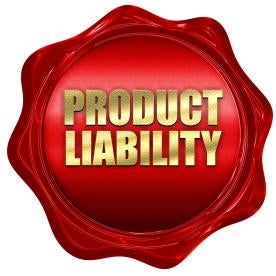Slack fill litigation can be frustrating for businesses – at times even infuriating. For companies yet to find themselves on the wrong side of a slack fill lawsuit, the claim often boils down to, “I thought there was more in the package even though the label said exactly what I was buying.” Slack fill claims have proliferated in recent years, driven in large part by how easy it has been for class action plaintiffs’ lawyers to plead a claim that will at least survive to the discovery phase – the expense of which causes many businesses to settle even frivolous cases. Yet in a rare breath of fresh air, Governor Jerry Brown recently signed California Assembly Bill 2632, which will amend California’s slack fill statutes to create a new tool for avoiding slack fill claims.
California slack fill liability is premised on Sections 12606 (non-food products) and 12606.2 (food products) of the California Business and Professions Code. (Neither statute creates a private right of action, but they serve as hooks for claims under California’s Unfair Competition Law (UCL) and/or Consumers Legal Remedies Act (CLRA).) These statutes declare that no “container shall be made, formed, or filled as to be misleading” and that “a container that does not allow the consumer to fully view its contents shall be considered to be filled as to be misleading if it contains nonfunctional slack fill.” “Nonfunctional slack fill” is “the empty space in a package that is filled to substantially less than its capacity for reasons” other than one of the several statutory safe harbors.
Prior to the recent amendments, Section 12606 contained fifteen functional safe harbors for slack fill, while Section 12606.2 contained six. Both statutes permit slack fill (1) necessary to protect the contents of a package; (2) caused by the requirements of the machine used to enclose the contents of the package; (3) due to unavoidable product settlement during shipping; or (4) to provide adequate space to display required labeling information or disclosures. Section 12606.2 further recognizes that certain food packaging may be functional and/or reusable, while Section 12606 also addresses issues such as whether the product contains a dosing device, multiple components, or a free sample, among other safe harbors.
Assembly Bill 2632 makes three important changes with respect to the statutory safe harbors for slack fill:
First, under both Sections 12606 and 12606.2, manufacturers may soon be immune from slack fill claims if their packaging clearly and conspicuously depicts and labels a “fill line.” Manufacturers concerned about product settling during shipping should be conservative in the placement of this line, marking it at the lowest conceivable product level.
Second, food manufacturers may now take advantage of two safe harbors that had previously – and inexplicably – only been available for non-food items. That is, Section 12606.2 will now recognize safe harbors where the dimensions of the product or immediate product container are visible through the exterior packaging, or where the actual size of the product or immediate product container is clearly and conspicuously displayed on the packaging.
And third, both Sections 12606 and 12606.2 will now contain an entirely new safe harbor, applicable where “the mode of commerce does not allow the consumer to view or handle the physical container or product.” That is, online sales or other sight-unseen sales will be immune from slack fill claims in many instances going forward.
These amendments to the “nonfunctional slack fill” safe harbors may help businesses in several ways. Most significantly, it is critically important to defeat slack fill claims early, before costly discovery. The key to early dismissal is to identify defenses that are unambiguous and do not turn on issues that courts leave juries to decide. If litigated correctly, proper use of the “fill line” or “actual size” disclosures (the latter being only newly available for food products) can lead to early dismissal of claims that might otherwise take months and significant attorneys’ fees to resolve. Additionally, the new safe harbor for online sales may of particular use in light of the fact that nearly all slack file cases are brought as class actions. Not only will the exclusion of online sales reduce the settlement value of these cases, but plaintiffs’ class action lawyers may have difficulty segregating out online from in-person sales, which could make it harder to obtain class certification.
When designing packaging for products where size, volume, or quantity matters, we strongly encourage manufactures to pay attention to the slack fill safe harbors provided under Sections 12606 and 12606.2. To avoid costly litigation, it is not always enough to assume that consumers will read the packaging or have reasonable expectations about the amount of product they are buying. Instead, assume that someone may buy your product for the sole purpose of trying to bring a class action lawsuit, and design your packaging accordingly to maximize your chances of being protected under a safe harbor, and to minimize your chances of being an easy target.


 i
i


